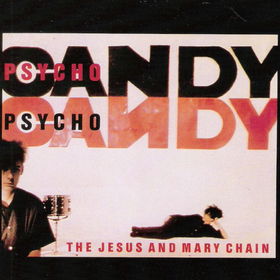Bands occasionally record a classic album and then split up, but more often they don't; so what do they do next? Often they release another great album that doesn’t get quite the same kind of recognition. Some:
The Smiths
The Classic: The Queen Is Dead (Rough Trade, 1986)
The Follow-up: Strangeways, Here We Come (Rough Trade, 1987)
The greatness of The
Queen Is Dead has perhaps been overstated; each of The Smiths’ studio
albums is a unique entity with a feel of its own. And this, their last, is
stranger, funnier and darker than any of its predecessors, but no less great.
The Rolling Stones
The Classic: Exile on Main St.(Rolling Stones, 1972)
The Follow-up: Goats Head Soup (Rolling Stones, 1973)
Okay, there is a definite sense of anticlimax following the
trilogy of Let It Bleed, Sticky Fingers and Exile on Main St., but Goat’s
Head Soup still has some of the band’s least acknowledged but greatest
songs, such as ‘Winter’.
Queen
The Classic: A Night At The Opera (EMI, 1975)
The Follow-up: A Day At The Races (EMI, 1976)
Although people and lists will tell you otherwise, A Day at the Races is in every way
superior to its predecessor, the iconic A
Night at the Opera. Okay, no ‘Bohemian
Rhapsody’, but unlike ‘Night...’
with its plethora of silly, pastichey music hall songs and the interminable ‘Prophet’s Song’, ‘A Day...’s sillier songs (as well as it’s contributions from the
other vocalists in the group) works far better as a whole. Plus the sleeve is
black.
Miles Davis
Bitches Brew is
the great moment of jazz/rock fusion; sprawling, intense, eclectic. But Jack Johnson is harder edged, more
focussed and arguably the better album. That’s what I’m arguing anyway.
The Jesus And Mary Chain
The Classic: Psychocandy (Blanco Y Negro, 1985)
The Follow-up: Darklands (Blanco Y Negro, 1987)
The Jesus And Mary Chain
The Classic: Psychocandy (Blanco Y Negro, 1985)
The Follow-up: Darklands (Blanco Y Negro, 1987)
Psychocandy is
doubtless a masterpiece of noise-pop, but the more reflective follow-up should
not be overlooked. At the time the band were criticised for the lack of chaos
and feedback but to be fair how many Psychocandys
do you need in your collection? Instead, this collection emphasises the Reid
brothers’ formidable songwriting skills.
Led Zeppelin
The Classic: Led Zeppelin IV/4 Symbols (Atlantic, 1971)
The Follow-up: Houses of the Holy (Atlantic, 1973)
Led Zeppelin IV
has ‘Stairway to Heaven’ and a
multitude of mostly lesser songs; follow-up Houses
of the Holy is not only the first Led Zeppelin album with a ‘proper’ title,
it’s also the first on which the band stretches beyond heavy blues/rock and
gentle folk-ish acoustic songs to
something more eclectic.
Pink Floyd
The Classic: Dark Side of the Moon (EMI, 1973)
The Follow-up: Wish You Were Here (EMI, 1975)
Okay, so this album is in no way neglected or overlooked.
But it followed Dark Side of the Moon,
one of the few records (and even fewer good
records) to sell over 50 million copies. Wish
You Were Here was comparatively less successful but may even be better,
songs like ‘Shine On You Crazy Diamond’
pointing towards the more anguished Floyd of the later 70s.
Marvin Gaye
The Classic: What's Going On (Tamla, 1971)
The Follow-up: Trouble Man soundtrack (Tamla, 1972)
What's Going On is a socio-political soul masterpiece, an almost faultless classic. Trouble Man is, by contrast, the soundtrack to a not-great semi-blaxploitation movie. The former is perhaps over-familiar; the latter less so, showing that Marvin Gaye, if not quite in the Isaac Hayes/Curtis Mayfield league soundtrackwise was pretty great.
















No comments:
Post a Comment